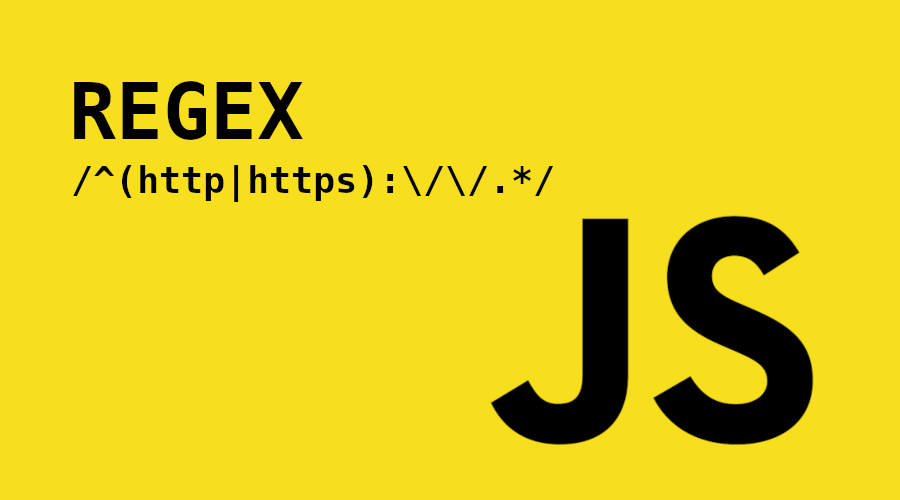A Guide to Regular Expressions (Regex) In JavaScript
Introduction
Regular expressions, commonly referred to as regex, are a powerful tool in JavaScript for pattern matching and manipulating text. They provide a concise and flexible way to search, validate, and transform strings, making them an indispensable part of JavaScript programming. In this article, we will explore the importance of regular expressions in JavaScript and provide an overview of their applications.
Importance of Regular Expressions in JavaScript
Regular expressions play a crucial role in handling various text-related tasks in JavaScript. Here are some key reasons why they are important:
- Pattern Matching: Regular expressions allow developers to define patterns and search for specific sequences of characters within strings. This enables tasks such as validating input, extracting data, and finding occurrences of specific patterns.
- Text Validation: With regular expressions, you can validate user input to ensure it matches a desired format. For example, you can validate email addresses, phone numbers, or passwords against predefined patterns, enhancing the security and reliability of your applications.
- String Manipulation: Regular expressions provide powerful string manipulation capabilities. They allow you to perform operations like replacing text, removing unwanted characters, or formatting strings according to specific patterns.
- Data Extraction: When working with large datasets or text files, regular expressions can help extract relevant information efficiently. You can define patterns to capture specific data elements, such as dates, prices, or names, from unstructured text.
- Text Parsing and Analysis: Regular expressions are valuable in parsing and analyzing text data. They enable you to break down complex strings into meaningful components, making it easier to process and analyze the information.
Overview of Regular Expressions and Their Applications
Regular expressions consist of patterns made up of characters, metacharacters, and special symbols. These patterns define the search criteria or transformation rules for manipulating text. Here are some common use cases for regular expressions in JavaScript:
- Validation: Regular expressions can be used to validate user input, such as email addresses, URLs, or form data. By defining specific patterns, you can ensure that the input matches the expected format before proceeding with further processing.
- Search and Replace: Regular expressions facilitate searching for specific patterns within a string and replacing them with desired content. This is useful for tasks like finding and highlighting keywords in a document or performing bulk find-and-replace operations.
- Data Extraction: Regular expressions enable you to extract specific information from text by defining patterns that match the desired data elements. This is valuable for tasks such as extracting URLs from a web page or retrieving specific data fields from a document.
- Text Parsing and Tokenization: Regular expressions can help break down complex text into smaller tokens or components. This is beneficial when dealing with natural language processing, lexical analysis, or parsing tasks.
- Data Cleaning and Formatting: Regular expressions allow you to clean and format text data by removing unwanted characters, normalizing whitespace, or converting text to a consistent format.
Basics of Regular Expressions
What is a Regular Expression?
A regular expression, often abbreviated as regex, is a sequence of characters that defines a search pattern. It is a powerful tool used for matching and manipulating strings in various programming languages, including JavaScript. Regular expressions consist of a combination of ordinary characters, metacharacters, and special symbols that collectively define a pattern to be matched against the target text.
Syntax and Patterns in Regular Expressions
Regular expressions in JavaScript are enclosed within forward slashes (“/”). The pattern to be matched is written between the slashes. Here’s an example of a basic regular expression pattern:
/abc/
In this case, the pattern is simply the sequence of characters “abc”. When applied to a string, the regular expression will search for occurrences of the pattern “abc” within that string.
Regular expressions can consist of more complex patterns using various syntax and special characters. Some common examples of pattern syntax include:
- Character Matching: Regular expressions can match specific characters in a string. For example, the pattern “/a/” will match any occurrence of the letter “a” in the target text.
- Quantifiers: Quantifiers specify the number of occurrences of a pattern to match. Examples include “*”, which matches zero or more occurrences, “+” which matches one or more occurrences, and “?” which matches zero or one occurrence.
- Anchors: Anchors define the position of a pattern within the target text. The “^” symbol represents the start of a line or string, while the “$” symbol represents the end of a line or string.
Character Classes and Metacharacters
Character classes allow you to define a set of characters that can be matched at a particular position in the target text. They are enclosed within square brackets “[]”. For example, the pattern “/[aeiou]/” will match any vowel character.
Metacharacters are special characters with a predefined meaning in regular expressions. They provide additional functionality and flexibility. Some commonly used metacharacters include:
- “.” (dot): Matches any character except a newline character.
- “” (backslash): Escapes a metacharacter, allowing it to be interpreted as a literal character.
- “|” (pipe): Represents logical OR, allowing multiple patterns to be matched.
- “()” (parentheses): Defines a group, allowing subpatterns to be captured or repeated.
Understanding character classes and metacharacters expands the capabilities of regular expressions and enables more precise matching and manipulation of strings.
Common Regex Patterns and Techniques
Matching Numbers, Letters, and Characters
Regular expressions in JavaScript provide powerful tools for matching specific patterns of numbers, letters, and characters within strings. Here are some common patterns and techniques:
- Matching Digits: To match any digit character from 0 to 9, you can use the pattern “/\d/”. For example, the regex “/\d+/g” will match one or more consecutive digits in a string.
- Matching Alphabetic Characters: To match any alphabetic character, you can use the pattern “/[a-zA-Z]/”. This pattern will match both uppercase and lowercase letters.
- Matching Alphanumeric Characters: To match alphanumeric characters (letters and numbers), you can use the pattern “/[a-zA-Z0-9]/”.
Validating Email Addresses and URLs
Regular expressions are widely used for validating email addresses and URLs. Here are some patterns and techniques to accomplish this:
- Email Address Validation: To validate an email address, you can use the pattern “/^\w+([.-]?\w+)@\w+([.-]?\w+)(.\w{2,3})+$/”. This pattern checks for the basic structure of an email address.
- URL Validation: To validate a URL, you can use the pattern “/^(https?|ftp)://[^\s/$.?#].[^\s]*$/”. This pattern checks if the URL starts with “http://” or “https://” or “ftp://” and follows the correct format.
Extracting Data from Strings
Regular expressions are useful for extracting specific data from strings. Here are some techniques:
- Capturing Groups: You can use parentheses “()”” to create capturing groups within a regular expression. The data matched within these groups can be extracted separately. For example, the regex “/(\d{2})-(\d{2})-(\d{4})/” can capture day, month, and year from a date string.
- Lookaheads and Lookbehinds: Lookaheads and lookbehinds are used to assert whether a pattern is followed or preceded by another pattern, without including the matched result in the final output. These techniques are helpful for extracting specific data based on certain conditions.
Removing or Replacing Specific Patterns
Regular expressions can be used to remove or replace specific patterns within strings. Here are some examples:
- Removing Whitespace: To remove whitespace from a string, you can use the pattern “/\s/g”. This pattern matches any whitespace character and can be replaced with an empty string.
- Replacing Specific Patterns: To replace specific patterns, you can use the replace() method in JavaScript along with regular expressions. For example, to replace all occurrences of the word “hello” with “hi” in a string, you can use the expression str.replace(/hello/g, “hi”).
Built-in Regular Expression Methods in JavaScript
Regular expressions in JavaScript are supported by a variety of built-in methods that provide powerful functionality for pattern matching and manipulation. In this section, we will explore some of these methods:
Using the RegExp Object
JavaScript provides the RegExp object, which allows you to create and manipulate regular expressions. You can create a regular expression object using the RegExp constructor or by using a literal notation with forward slashes (/). For example:
// Using the RegExp constructor
const regex = new RegExp(‘pattern’);
// Using literal notation
const regex = /pattern/;
The RegExp object provides methods for pattern matching, testing, and manipulation.
String Methods for Regex Operations
JavaScript string objects also offer several methods for working with regular expressions:
The match() method: The match() method is used to retrieve all matches of a regular expression in a string. It returns an array containing the matches or null if no match is found. For example:
const str = ‘Hello, world!’;
const regex = /Hello/;
const matches = str.match(regex);
console.log(matches); // Output: [“Hello”]
The search() method: The search() method searches a string for a specified regular expression and returns the index of the first match. If no match is found, it returns -1. For example:
const str = ‘Hello, world!’;
const regex = /world/;
const index = str.search(regex);
console.log(index); // Output: 7
The replace() method: The replace() method is used to replace matches of a regular expression with a specified replacement string. It returns a new string with the replacements. For example:
const str = ‘Hello, world!’;
const regex = /world/;
const newStr = str.replace(regex, ‘JavaScript’);
console.log(newStr); // Output: “Hello, JavaScript!”
The match() Method
The match() method is particularly useful when you want to extract specific parts of a string that match a regular expression. By using capturing groups, you can retrieve the matched substrings as individual elements of an array. For example:
const str = ‘John Doe (25 years old)’;
const regex = /(\w+)\s(\w+)\s\((\d+)\syears\sold\)/;
const result = str.match(regex);
console.log(result); // Output: [“John Doe (25 years old)”, “John”, “Doe”, “25”]
The search() Method
The search() method is useful when you want to find the index of the first occurrence of a regular expression match in a string. It returns the index value or -1 if no match is found. For example:
const str = ‘This is a sample string.’;
const regex = /sample/;
const index = str.search(regex);
console.log(index); // Output: 10
The replace() Method
The replace() method allows you to replace matches of a regular expression with a specified replacement string. You can use capturing groups and backreferences to manipulate the replacement string dynamically. For example:
const str = ‘Hello, world!’;
const regex = /world/;
const newStr = str.replace(regex, ‘JavaScript’);
console.log(newStr); // Output: “Hello, JavaScript!”
Regex Libraries and Tools
When working with regular expressions in JavaScript, there are several external libraries, online tools, and resources available that can greatly enhance your regex operations. In this section, we will explore some of these valuable resources:
External Libraries for Advanced Regex Operations
- XRegExp: XRegExp is a powerful JavaScript library that extends the capabilities of regular expressions. It provides additional syntax and features, including named capture, Unicode support, and easier handling of character classes. XRegExp is widely used and offers enhanced functionality compared to native JavaScript regular expressions.
- RegExp.js: RegExp.js is another popular JavaScript library that provides advanced regular expression features. It offers additional functionality like lookaheads, lookbehinds, and atomic groups, which are not available in native JavaScript regular expressions. RegExp.js can be a great choice for complex regex operations.
- lodash: Although lodash is primarily a utility library, it includes a handy _.escapeRegExp() function. This function allows you to easily escape special characters in a string, making it safe for use within a regular expression. This is useful when you need to dynamically construct regular expressions.
Online Regex Testers and Validators
- RegExr: RegExr is a powerful online tool for testing and learning regular expressions. It provides a user-friendly interface where you can enter your regular expression pattern and test it against sample text. RegExr also offers a library of common regex patterns and a helpful cheat sheet.
- Regex101: Regex101 is another popular online regex tester and debugger. It supports multiple regex flavors, including JavaScript, and provides real-time feedback on matches and captures. It also offers detailed explanations of each regex component and allows you to share your regex patterns with others.
Regex Cheat Sheets and Reference Guides
- MDN Web Docs: The MDN Web Docs is an excellent resource for JavaScript developers, including a comprehensive guide on regular expressions. It covers all the essential concepts, syntax, and methods related to regular expressions in JavaScript. The MDN guide is regularly updated and provides examples and interactive code snippets.
- Regular-Expressions.info: Regular-Expressions.info is a website dedicated to regular expressions. It offers an extensive collection of regex tutorials, reference guides, and examples for various programming languages, including JavaScript. The site provides in-depth explanations of regex patterns and constructs, making it a valuable resource for learning and mastering regular expressions.
By utilizing these external libraries, online tools, and reference guides, you can enhance your regex skills, simplify complex operations, and ensure the accuracy of your regular expressions. Experimenting with different tools and resources will help you become more proficient in leveraging the power of regular expressions in your JavaScript projects.
Real-World Examples and Use Cases
Regular expressions are widely used in various real-world scenarios to solve common programming challenges. In this section, we will explore some practical examples and use cases where regular expressions play a crucial role:
Form Validation with Regular Expressions
One of the most common use cases for regular expressions is form validation. Regular expressions provide an efficient and flexible way to validate user input and ensure it meets specific criteria. Here are a few examples:
- Email Validation: Regular expressions can be used to validate email addresses by checking if they adhere to a specific pattern. This ensures that the user enters a valid email address before submitting a form.
- Phone Number Validation: Regular expressions can help validate phone numbers by verifying if they match a specific format or pattern. This ensures that users enter phone numbers correctly and consistently.
- Password Strength Validation: Regular expressions can be utilized to enforce password strength requirements, such as minimum length, the inclusion of uppercase letters, lowercase letters, numbers, and special characters.
Data Extraction and Manipulation
Regular expressions are invaluable for extracting specific data from strings and manipulating it according to desired patterns. Here are a few examples:
- Extracting URLs from Text: Regular expressions can be used to identify and extract URLs from a block of text. This is particularly useful when dealing with large datasets or when parsing HTML or XML documents.
- Parsing Log Files: Regular expressions can help parse log files by extracting relevant information such as timestamps, error codes, IP addresses, or specific keywords. This allows for easier analysis and troubleshooting.
- Data Cleaning and Formatting: Regular expressions enable data cleaning and formatting tasks like removing unwanted characters, converting data to a specific format, or extracting specific fields from structured data.
Search and Replace Operations
Regular expressions excel at search and replace operations, allowing you to find specific patterns within strings and replace them with desired content. Here are a few examples:
- Find and Replace in Text Editors: Text editors often provide a “find and replace” feature that supports regular expressions. This allows you to perform complex search and replace operations across multiple files or within a single file.
- Data Sanitization: Regular expressions can help sanitize data by replacing sensitive information, such as credit card numbers or social security numbers, with placeholders or masking characters.
- Code Refactoring: Regular expressions can assist in code refactoring tasks by finding and replacing patterns in code, such as renaming variables or updating function calls.
Regular expressions offer immense power and flexibility in handling various real-world scenarios. By mastering their usage, you can efficiently validate user input, extract and manipulate data, and perform complex search and replace operations. Regular expressions are a valuable tool in the JavaScript developer’s arsenal.
Conclusion
Regular expressions (regex) are a powerful tool in JavaScript that allow developers to work with patterns and manipulate strings efficiently. In this article, we explored the importance of regular expressions in JavaScript and their wide range of applications.
In conclusion, regular expressions are a fundamental tool for JavaScript developers. They offer a powerful and flexible solution for pattern matching, string manipulation, and data processing. By understanding the basics, exploring common patterns and techniques, and leveraging the built-in methods and external tools, developers can harness the full potential of regular expressions in JavaScript programming. Regular expressions open up a world of possibilities for efficient and effective string handling, contributing to the development of robust and scalable applications.



